A Guide on How to Develop Content for Each Stage of the Buyers’ Journey
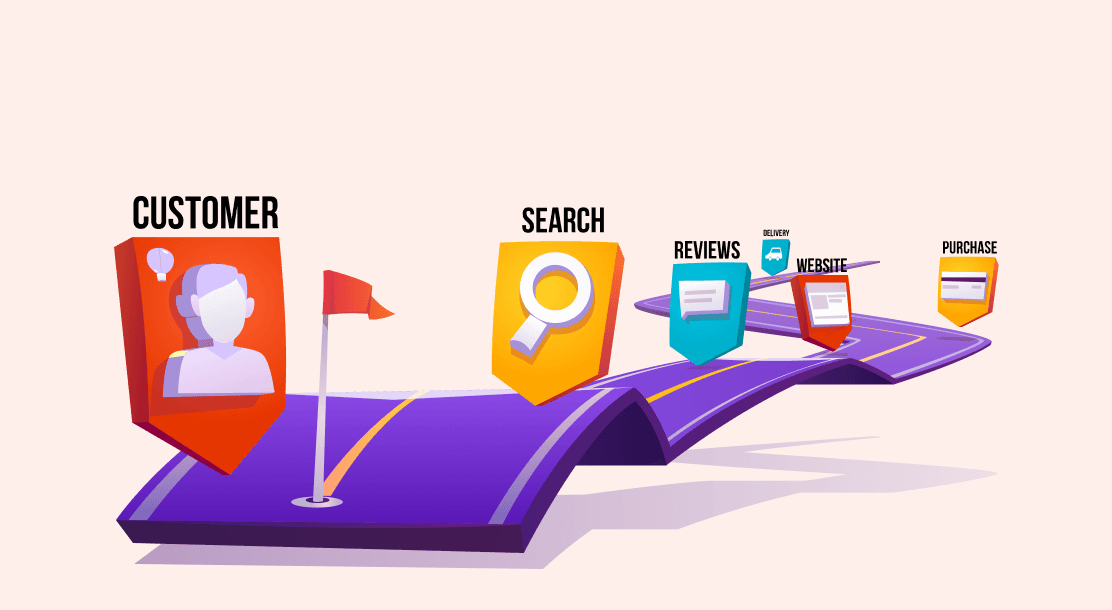
The “customer journey” refers to the customer’s overall experience when interacting with a brand, from discovery to purchase. Here, emphasis is placed on the customer’s experience–rather than transactions—after interacting with a brand.
A well-designed website, top-notch elements, and an attentive customer care team on call might seem perfect for attracting new customers. But, when customers perceive something wrong with your communication, they are more likely to seek out competitors. Creating a customer experience map can help you understand how your consumers perceive your business. Using the map, you can see where your messaging falls short at each consumer touchpoint.
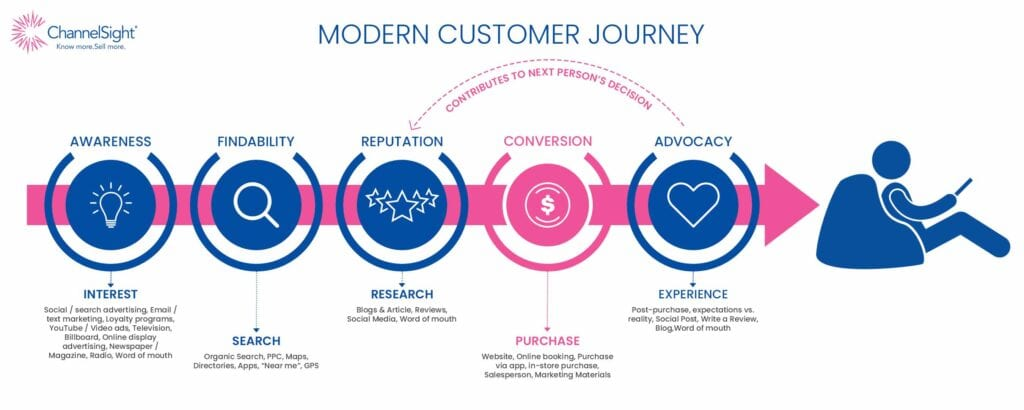
Whatever your goal, whether you’re looking to acquire leads, increase sales, or boost conversions, content plays a critical role in moving people through the buying process. Globally, 4.95 billion internet users can be reached through content development plans. Content—be it videos, images, or blogs—is a powerful way to inform your prospects and customers about you and your company. It also assists your company is positioning itself as an expert.
Marketers spend 70% of their time and money on content marketing. It’s hardly surprising then that marketers can achieve a lot with the appropriate material. A content marketing funnel aims to develop content that connects with your target market throughout their buying process. A content development strategy aims to get the seller’s or business’ message into the buyer’s consciousness. Only a small percentage of marketers know how to develop compelling content.

In this article, we’ll dive into several topics such as developing content for each stage of the buyer’s journey, the importance of a content development strategy, how to create a content development plan, etc. By the end of this article, you will have understood the buyer’s journey and the various stages involved throughout the journey.
Understanding the Three Stages of the Buyer’s Journey
Businesses frequently concentrate their marketing efforts toward the bottom of the sales funnel to catch customers when they are ready to buy. However, a customer’s trust and business may be won further up the funnel. After all, 96% of website visitors don’t even consider making a purchase.

If you can gain a prospect’s trust early on, you may later present yourself as the answer to their problem when they are ready to make a purchase decision. By asking the right questions at each stage of the buyer’s journey, you can increase the quality of your leads and get a better return on your marketing efforts.
Prospective customers feel the symptoms of the difficulty they face and try to put a name to it during the awareness stage of the buyer’s journey. They have no idea who you are or that you exist. They’re stumbling through the internet, attempting to find out their issue and get a handle on it.
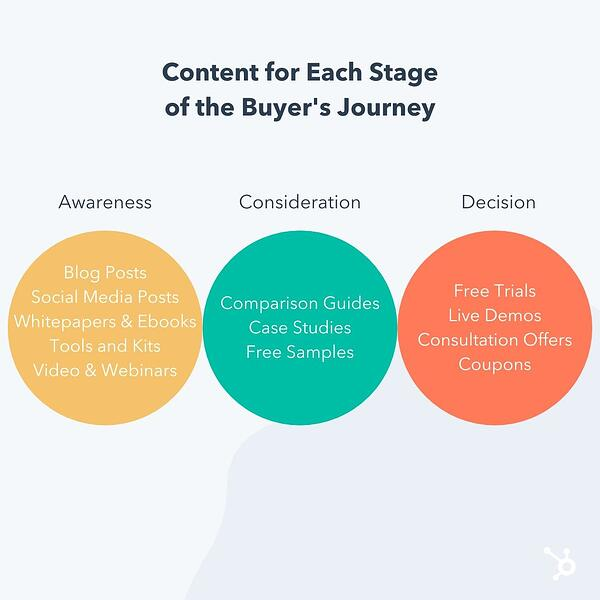
Companies may fine-tune their marketing efforts to attract the optimal target demographic for their service or product by understanding the buyer’s journey. Sales development personnel can qualify and produce leads by understanding the purchase process, and sales professionals can give the best solutions to potential clients at different stages of their trip.
1. Awareness
The awareness stage begins when a lead becomes aware of a sticking point. This is when clients interact with your firm at the top of the funnel for the first time. Customers will explore the issues they face in the awareness stage, but they will not begin exploring viable solutions. They’ll seek general information about the issue rather than remedies at this stage. They may be aware that they face a problem, but they have no idea what questions to ask about it, let alone the whole extent.
In the beginning, the customer may not even be aware that they have a problem or need. Then, something happens. They have a moment of realization that causes them to find a solution.
Example: The customer’s car breaks down, and to fix the problem, they need a mechanic.
Evaluation and comparison: The client looks at all possible solutions, compares them, and evaluates them.
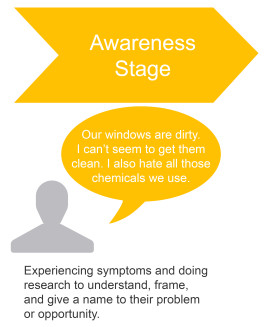
Consumers start gathering more general information about their problems or requirement at this point. An example of a potential issue is an operations manager who recognizes that his workplace has to be more organized but is unsure of the best answer for the company.
2. Consideration
During the consideration stage, the buyer will expand on their previous research and begin looking for viable solutions to their problem. Customers are aware that they have an issue and are ready to learn about the various products and services available to solve it at this stage. They are not yet prepared to be sold on one in particular and are attempting to learn about the advantages and disadvantages of each.
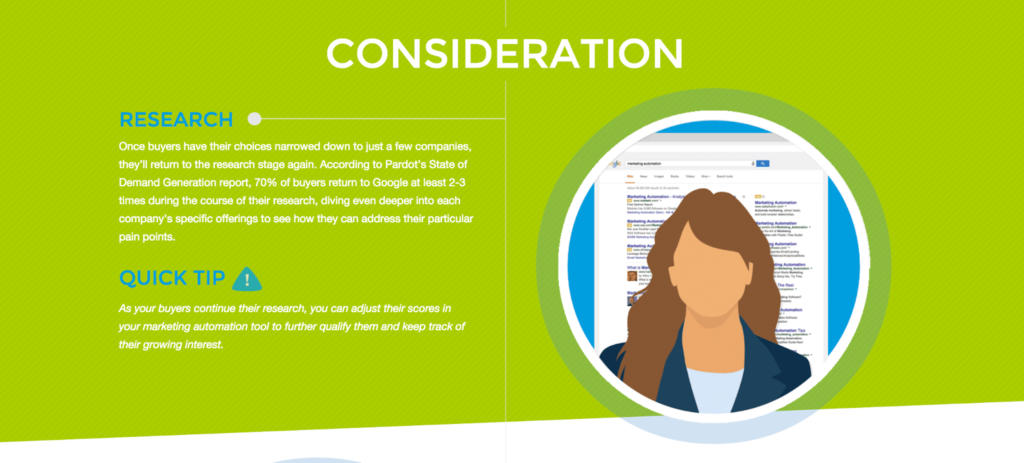
You want to generate material that helps these potential consumers view your product or service as a solution to their problem during the consideration stage. By developing consideration-stage material, you may put your products or services on your prospective client’s shortlist of options for dealing with the problem.
Your potential consumers see your product or service as a viable solution to the problem they identified during the awareness stage during the consideration stage.
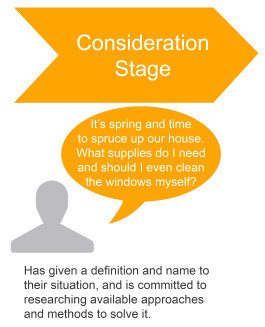
Prospective consumers or leads who have reached the consideration stage better understand their problems or requirements and are now evaluating various solutions. They aren’t quite ready to buy since they require some assistance determining the best option.
The consumer then makes a decision based on the information and their priorities.
Example: A customer appreciates your positive ratings and convenient hours and decides to make an appointment.
3. Decision
When buyers reach the decision stage, they have exhausted all other options for resolving their problem and are ready to purchase a particular product or service. To understand more about the product/service and the company, they’ll start reading reviews, testimonials, videos, etc.
Buyers today want to be well-informed before making a purchase, allowing you to show why you deserve their business. You can also persuade customers that your product can help them by allowing them to try it out for themselves. Demonstrating how your product can improve their lives is the most effective technique to persuade them to buy it.

A potential buyer begins to communicate with sales rather than marketing at the decision stage. As a result, your sales staff will know which leads turned into customers and which did not. Knowing what types of discounts and content attract the most customers can help you improve your marketing strategies. Therefore, as a marketer, you should always stay in touch with the sales team to refine your marketing efforts.
Customers have decided to buy now that they’ve reached the decision stage. They have completed most of their research at this point and have a good understanding of their concerns and what their ideal solution may look like. They may require additional information on why they should select a specific brand, product, or service from the available options. You should be aware that their decision may be influenced by the facts of the solution on offer and by an emotional component based on affinity and relationship.
The customer’s experience with your products and services was so positive that they recommended you to others.
The customer much appreciated your exceptional customer service. You even got the automobile fixed ahead of time. Customers were ecstatic with their brand experience and raved about it to their friends.
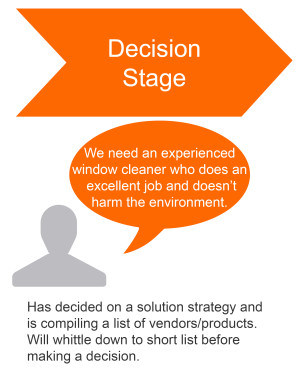
Consider a moment when you were sick and used the healthcare system in India. You have a painful throat, and after some study, you discover that you have strep throat. As a result, you enter the consideration stage and explore your possibilities for healing or alleviating the symptoms of a sore throat. Finally, when you get to the decision stage, you evaluate which product is the most suitable for you to help you get rid of the sore throat.
How to Develop Content for Every Stage
You must write focused content to produce qualified leads as part of your sales strategy. Content for the sake of information is similar to cold calling in legacy sales, where you seek quantity over quality in the hopes that one of those calls or pieces of content will suddenly arrive at the target. Most current clients conduct their studies online and even make decisions long before the sales team contacts them, which could be an expensive mistake.
The buyer’s trip, as is visible, can be pretty complicated. Customers are likely to spend time (related to the type of difficulty) researching and accumulating information online to decide unless they are loyal to a brand or service and are aware of the solution they are looking for.
You must first understand the consumers’ language while searching and the kind of material they expect at various phases of the content creation funnel. Customers will use different terminology based on the stage they are currently at in the process. You might find keyword modifiers useful in these kinds of situations:
Awareness: What, Where, How, Who, Why, Improve, Troubleshoot, Resolve
Consideration: Best, Types, Review, Which, Service, Solution
Decision: Brand, Buy, Appointment, Deals, Discount Code, Book, Test
- Developing content for the awareness stage
Customers use Google (and other search engines) to learn more about a topic or obtain information that solves their problem during the awareness stage. Because the client is unlikely to be familiar with your brand, products, or services at this point, the material should be instructive and instructional rather than sales-oriented.
Blogs, social media postings, videos, infographics, photos, and podcasts are the greatest tools for these stages.

- Developing content for the consideration stage
Your potential customers will begin researching the various products and services they feel have a chance of helping them as soon as they see the multiple solutions to their problem.
Quizzes, webinars, free ebooks or downloadable guides, explainer videos, or webinars are just a few of the types of content you can use to reach your audience at this point. However, the tone and topic of blog posts remain relevant. For example, a blog or video could compare two products or solutions at this stage.
- Developing content for the decision stage
With every step of the buyer’s journey, content becomes more specific. Interactivity is generally required for successful content at this stage. When they reach the decision stage, buyers need information regarding their unique and personalized concerns. A brand can provide free trials, live demonstrations, consultations, or coupons at this stage to allow buyers to explore their specific concerns.
Defining the Buyer’s Journey
The buyer’s journey describes the steps customers take to learn about, assess, and buy a new product or service. It is a description of a customer’s process for making a purchase. In other words, buyers do not decide to buy in the heat of the moment. Before opting to purchase a new product or service, they go through a process of becoming aware of it, contemplating it, and assessing it.
The buyer’s journey is divided into three stages. The consumer expects something quite different from your brand at each stage of the experience, and having a clear image of your buyer’s journey can help you provide them with the suitable material at the right time.
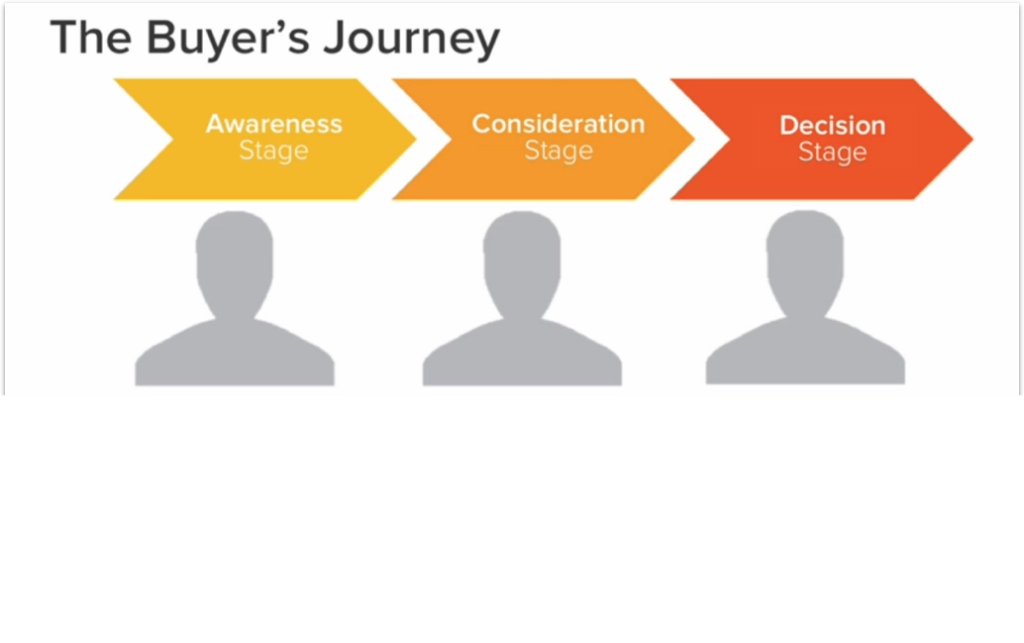
Sales agents can better empathize with consumers and offer their products or services along that road by knowing the buyer’s journey, the obstacles and problems they face along the way, and the variables that impact their thinking.
Customers today have access to more information than ever before, allowing them to examine your firm and the services or commodities you offer compared to competitors. However, this also means that you have an early opportunity to earn their trust before considering your competition (or reaching the “provider aware” stage of their trip).
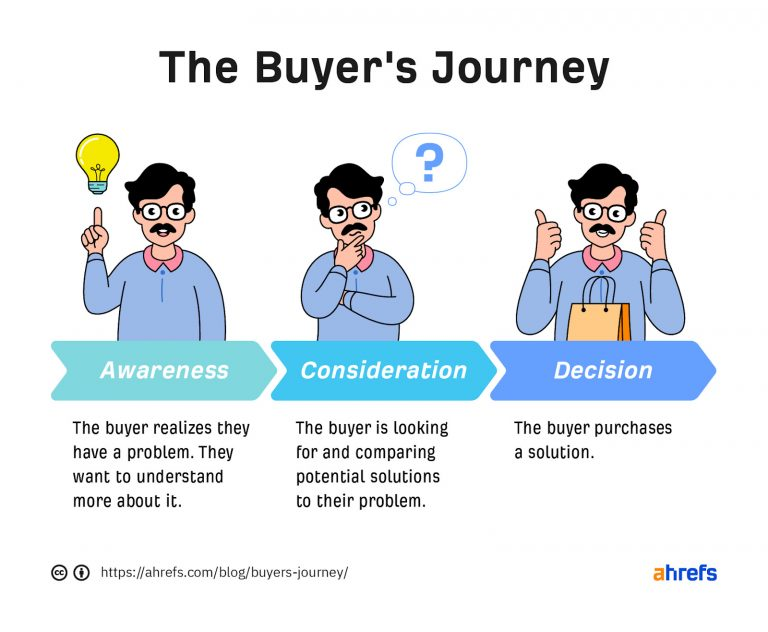
The “buyer journey” study has two significant limitations. It concentrates solely on clients’ needs (excluding prospective customers). Second, it begins when a person becomes a customer in the first place. It eliminates the “buyer journey” or—as researchers like to call it–“path-to-purchase.”
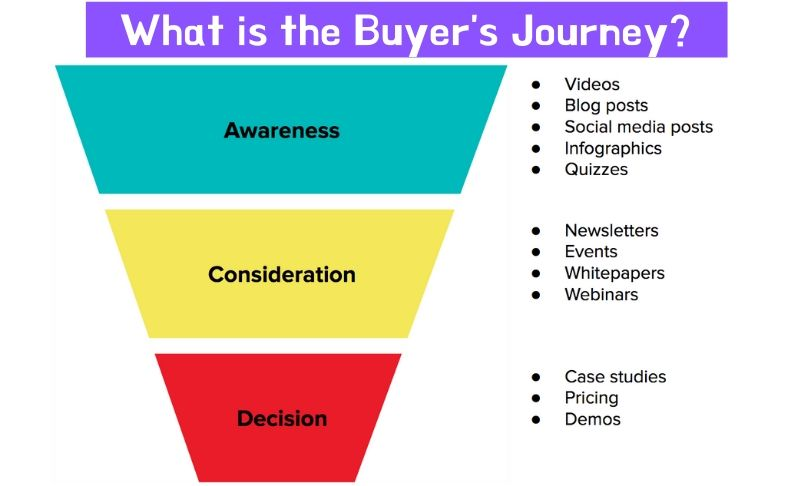
Thanks to the internet, consumers can conduct their research on a product online, evaluate brands based on reputation, pricing, and any other variables that they may find helpful, and finally choose a supplier that best suits their needs.
Customers use the buying decision process to make market transaction decisions before, during, and after acquiring a good or service. It can be regarded as a special cost-benefit analysis with numerous options.
Two notable instances are shopping and deciding what to eat. Decision-making ability is a psychological construct. While a decision cannot be “seen,” we can infer based on observable behavior when a customer has made a decision. One can say that a psychological “decision-making” event has occurred. We presume they have committed to carrying out the action based on the observed activity.
The customer journey funnel is designed to keep and expand existing customers and includes the loyalty stage.
In Summary
You have done half your job if you can develop a good content development strategy. The brand that plans its content and maps each type of content to a particular funnel step is said to be the most successful brand.
An ideal content development plan involves helping prospects throughout the journey from start to finish. Nowadays, people randomly search for whatever products or services you are selling.
In fact, 71% of customers start their research with a generic search. As laziness takes over customers day by day, they start getting attracted to things that are easy to reach. You can use this information to devise a strategy that you can use to get into your consumers’ minds.
Key Takeaways
- You can use a content development strategy to tell your customers your brand’s story and answer their queries.
- A web content development expert is responsible for developing the website content to be published.
- Your marketing and sales strategy should include the buyer’s journey. A buyer’s journey is the path your personas take when they decide to buy something.
- “Brand sentiment” refers to the emotional content within the website that attracts buyers. Brand sentiment helps convey positive, negative, or neutral feelings.
- Decision-making is a psychological construct because it involves high risk and requires a commitment to act.
- A marketing funnel (also known as a purchase funnel) is a content development strategy used to persuade and convince people who usually visit your website to buy the brand’s product and make them your customer.
- The marketing funnel is flipped upside down to make it a customer experience funnel, which talks about customers’ experiences.
- It is just not enough to find a solution to a problem. Instead, you should try to be in the buyer’s mind and tackle the problem they face.
FAQs
The better the customer experience, the more probable it is that they will make a decision and if done right, purchase from you. This way, you will avoid making the same mistakes as traditional salespeople who follow common approaches such as waiting until the prospect is ready to buy or putting the fear of missing out in the customer.
The primary purpose of content development is to provide knowledgable fillings to users. Content development revolves around a systematic approach that calls for researching, writing, gathering, organizing, and editing information before it is ready for publication.
Identifying a fresh topic, deciding what form you want the material to take, formalizing your approach (keywords or otherwise), and generating it are all steps in the web content development process.
A content development strategy aims to plan, create, deliver, and govern content. A page’s content is not only its words but also its images and multimedia elements.
The content on a website that is easy to read and accessible will reach a wider audience by default. The rules for web development content writing go beyond copywriting. Make sure non-copy components are included in your landing pages and other website content.
Latest Blogs
Explore how Google’s 2025 AI search updates triggered ranking chaos. Learn actionable strategies to adapt your SEO for AI Overviews, zero-click searches, and SERP volatility. Stay ahead now.
Learn how to rank on AI search engines like ChatGPT, Perplexity, and Gemini by optimizing your content for authority, structure, and relevance. Stay ahead in AI-driven search with this strategic guide.
Explore the best healthcare SEO services for your medical practice. Improve online visibility and effectively reach more patients in need of your services.
Get your hands on the latest news!
Similar Posts

Content Strategy
5 mins read
Choosing The Best Healthcare Marketing Agency For Effective Content Solutions

Content Marketing
4 mins read
Top 10 Agencies B2B SaaS Content Marketing for B2B Success

B2C Marketing
5 mins read